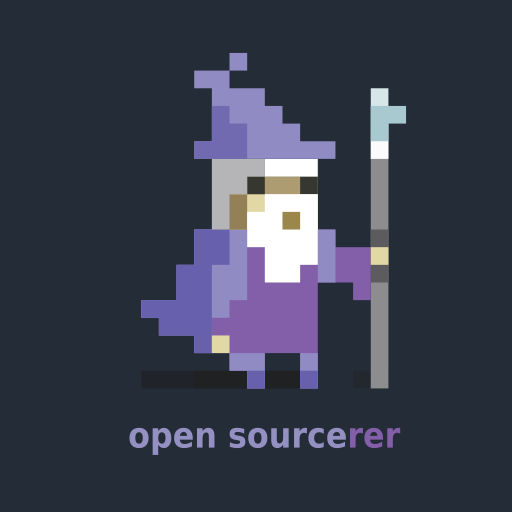I hate trying to shove everything I buy at IKEA into my small car. All those flat packs just don’t fit in a small hatch back. If IKEA was closer, i could make several trips, but no, jam the car full, strap things to the roof, and figure the next time, I may have a different car.
Otherwise, flat packs have their uses, I couldn’t fit three billi shelves in my car otherwise.
can mods pin this comment please
Definitely hear you there, but wrong flatpak 😉
We’re talking about Linux package formats every second day here. Let’s today talk about IKEA. I like it.
It could have been the bluey episode “flat pack”, quite an awesome episode on it’s own.
I kind of figured it was some standard or some such, but on a generic ask community, who knows? (It Needed a link, or context)
Agreed - and Bluey rocks!
No no, they’re on to something.
I was going to comment the opposite - you full your house with furniture that fit in your car in flat pack form, but when you come to move, none of it fits any more!
Nice try Mark, still not gonna use Snap
whats bad about snap in comparison (not trying to be sarcastic, im just uninformed)
i’m not informed much either, but here’s what i gather; it’s centralized around the proprietary Snap Store and you can’t run your own Snap repositories, Snap apps take ages to start up, and each Snap app is mounted as a separate partition (???). there’s a whole bunch of technical issues that go over my head too, and Snaps have seen so little adoption that Canonical basically had to twist the arms of flavor maintainers to drop Flatpak support and support Snap out of the box. it’s evidently so bad even Ubuntu’s official flavors wouldn’t support it until Canonical forced them to
howd canonical force them / they dropped support of flatpak tf?! i get canonicals a private company that needs to make money but thats so heavily ironic for people whove built what they have on fossware
They don’t automatically theme along with the system.
Except when they do, of course :p I am not familiar with what allows them to follow themes but inconsistently.
IKEA is usually very good, but there is a lot of cheaper stuff at other stores where holes aren’t lined up correctly or the fasteners are cheap and easy to damage. I have had some build issues with IKEA too, usually really inexpensive stuff like a dining room chair, but it is uncommon.
deleted by creator
Technically right, though. OP didn’t specify we’re talking about Linux here. And the way IKEA does it works quite well. At least for me. And they’re nice and give you spare parts if you need them.
deleted by creator
So I got my complete kitchen from them, excluding the basin, the electrical devices and the countertop. And a 3m PAX wardrobe. Half of the kitchen moved with us and we got the rest delivered. The two men were crazy ‘animals’ who got the tons of laminated wood into the house in no time. It took us about 3 days to assemble it all. And I’m really satisfied with everything. Especially all the drawers we got for the kitchen are awesome. No bending down and rummaging in kitchen cabinets any more…
100% can recommend. Quality is better than most cheap kitchens I sometimes see at other people’s places. But it’s probably not top-of-the notch either. But I’m sure it’ll last for quite some time.
(Disclaimer: I’m German. We (more often than not) don’t get the kitchen provided by the landlord.)
IKEA is also really good when it comes to returns when you get something that doesn’t line up right, at least from the couple times I’ve had something not work
Filesystem permissions
For many apps it is not an issue and provides additional security but in other cases it’s very annoying and not trivial to fix.
Example1: opening a .docx from Thunderbird flatpak with OnlyOffice flatpak does not work out of the box.
Example2: mpv and VLC flatpaks work well for local files, but fail to open network shares from Dolphin.
I think a possible solution would be runtime permission dialogs when denied access.
They take up too much space. Considering that you need to install flatpak versions of stuff that you already have on your system, this makes 200MB applications take up like 800MB or smth.
Running them from the command line isn’t easy, so it’s not really used for command line tools. This is the one and only upside to snaps.
I figured it out but it’s still finicky
- “flatpak enter”
- for qalculate, the default operation is to open the gui, but the CLI can be opened with
flatpak run --command=qalc io.github.Qalculate.qalculate-qt-defaults -nocurrencies -f "script_name.qalc" -i -t
- needless sandobxing (by default flatpaks can access your filesystem but not mounted folders, how is that secure and not jist inconvenient?)
- yet another application manager not even well integrated into operating systems (linux mint doesn’t update flatpaks by default)
- applications are usually not updated very often, not sure if that’s a systemic problem or just laziness
- application X that is 50MB stabdalone requires 2GB to install and takes 3GB of space because it requires the entirety of gnome libraries. Application Y also requires 3GB because they use KDE or another version of gnome
Application Z requires another 3GB because it needs Gnome runtime version X+1, not version X. Although I do believe Flatpak does some kind of reduplication so actual used space is somewhat less.
It’s also less of a problem if you flatpak all the apps vs having just a handful. The more apps the better chance they’re actually sharing runtimes.
Flatpak updates are handled very smoothly by KDE Discover, I always assumed Gnome Software did the same, so no additional package manager required.
Despite the few downsides Flatpak is still wonderful. As a Kubuntu user it’s nice to say Farewell random PPAs whenever there’s a need for an actual newish version of an application
On a space limited , non upgradeable device (128GB ssd, half of that considering a dual boot) I find it literally unusable. At least with PPAs and AppImage i save 90% of redundant space
wjays a mountded folder
That was a interesting set of typos
theyre not typos, that wad jnyneitjonal
If you mount an external partition on a directory (under /mnt for example) by default Flatpaks cannot access it because they are sandboxed
I only use apt, or compile from source but here is what some guy online wrote:
* Creates larger packages from compiling in most/all of the libraries used in development that use up more storage space because you are storing additional copies of libraries already on your system. * Slower loading because you are loading a separate copy of libraries that may already be loaded and available for use. * Updates to external libraries that add features, fix bugs, or change functionality are not available to the existing flatpak, which also reduces the testing use base for updates to support libraries. * Breaks the fundamental concept of *NIX which is to separate out development of different subsystems, meaning that if an external system (library) changes how it does things, your program may no longer work or have features suddenly limited because it is using an older version of the library. * Depends on the Application Binary Interface (ABI) remaining stable in the Linux kernel, which is preferred but not guaranteed. If an ABI is changed, the flatpak can stop working. * Can be difficult to adapt to different distributions of Linux. Many Linux distributions have package maintainers that compile programs from source to ensure it works on and is compatible with the particular distribution they are supporting, and flatpaks can struggle to work on a different distribution. * Sometimes avoids the work necessary to make the source generally compile-able across distributions. It's easier to compile a flatpak on the system it was developed on because all of the testing was done on one particular distribution. However, different distributions may have differences like the files in different locations, different software or libraries installed, different versions, different compilers, and without the program being compiled from source with all these differences, the codebase may never be updated to be take into account the differences in systems. The source code can be very stale, in a sense. * Not a long-term solution. Flatpaks generally age out over time because they can't keep pace with distribution changes over time, as the open source environment is still very dynamic. Only source code that is legal to share is really sustainable over the long-term. * Reduce use testing and reporting of bugs. Reported bugs usually get ironed out over time, as most program and package maintainers take pride in their work. With flatpaks, users don't get to test the program against updates to support libraries, so there are less user reports of bugs, and it can mean that bugs don't get identified as quickly or ever. * Harder to identify bugs. Because flatpaks are monilithic binaries comprising both original and external work, it can be hard to figure out if a given bug is in the original program or supporting library, leading to mis-reporting of bugs, which adds effort to figure out the real source of the bug.I only use apt or compile from source
how do you keep track of all the things you’ve downloaded?? is it not a nightmare removing unused libraries, modules, etc. over time?
Also dependency conflicts can be pretty annoying. I prefer buying a bigger hard drive personally.
Can’t get them to run on Windows.
It’s a feature \s
Blocked by my employer’s security policies.
huh why
Because they often don’t get updated when security updates become available
deleted by creator
This would be really nice. I try to maintain packages for the software I write, and Nix completely defeated me. The learning curve for package building was steep, and for casual contribution (I don’t use Nix myself), I had neither the bandwidth nor interest to climb it.
It looks like things have improved for my language of choice since I last looked at it - there appears to be a convenience builder now - so I may try again.
whats a transactional package manager and wjats the snow package manager (/ can i use jt on limux mint when it comes out)
deleted by creator
deleted by creator










